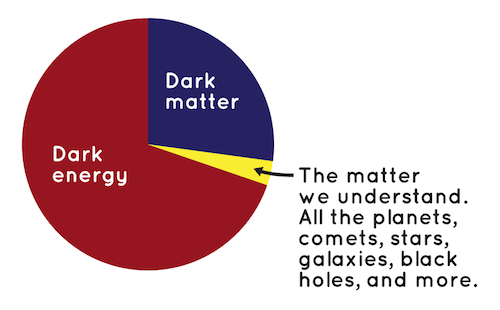The universe is a vast and enigmatic place, filled with wonders we can only begin to comprehend. One of the most perplexing mysteries is dark matter, an invisible substance that exerts a gravitational pull but remains undetectable by our current technology. This article delves into the fascinating world of dark matter, exploring its existence, properties, and the ongoing scientific quest to unravel its secrets.
The Curious Case of Missing Mass: Dark Matter
For decades, astronomers have observed a discrepancy between the observed mass of galaxies and the amount of mass needed to hold them together based on the visible stars and gas. Galaxies, including our own Milky Way, rotate at speeds defying the gravitational influence of the stars and gas they contain. Imagine a carousel spinning much faster than expected – for it to maintain stability, there must be an unseen force acting upon it. This unseen force is believed to be dark matter, a mysterious substance constituting a significant portion of the universe's mass.
The Invisible Architect: Properties of Dark Matter
Since dark matter doesn't interact with light or electromagnetic forces, directly observing it is impossible. However, scientists have pieced together some of its properties based on its gravitational effects:
- Invisibility: Dark matter doesn't emit, absorb, or reflect light, rendering it invisible to our telescopes.
- Dominant Mass: Dark matter is estimated to comprise roughly 27% of the universe's mass, far outweighing the mere 5% contributed by visible matter like stars and planets.
- Clumpy Distribution: Dark matter isn't uniformly distributed throughout the universe. It's theorized to form a vast cosmic web, with denser concentrations around galaxies and clusters of galaxies.
- Weakly Interacting: Dark matter particles are thought to interact very weakly with each other and with normal matter, explaining why they haven't been directly detected yet.
The Veil: Techniques to Study Dark Matter
While direct observation remains elusive, scientists employ various techniques to study dark matter indirectly:
- Gravitational Lensing: When light from a distant object bends due to the gravitational pull of a massive object like a galaxy or a cluster of galaxies, it creates a distorted image. By analyzing this distortion, scientists can estimate the amount and distribution of mass, including dark matter, present in the foreground object.
- Galaxy Rotation Curves: Measuring the rotational velocities of stars within galaxies allows astronomers to calculate the total mass required to generate that motion. The discrepancy between the calculated mass and the visible mass points towards the presence of dark matter.
- Weak Lensing Surveys: By studying the subtle distortions in the shapes of millions of distant galaxies, scientists can map the large-scale distribution of dark matter across vast cosmic regions.
- Particle Collision Experiments: Powerful particle accelerators like the Large Hadron Collider (LHC) are used to search for new particles that could be candidates for dark matter. These experiments recreate conditions believed to have existed in the early universe, potentially leading to the detection of dark matter particles.
The Quest Continues: The Future of Dark Matter Research
Understanding dark matter is crucial for unraveling the grand story of our universe. Its existence forces us to revise our understanding of physics and cosmology. As technology advances, new telescopes like the Nancy Grace Roman Space Telescope offer the promise of more precise measurements and deeper insights into dark matter's properties and distribution. Additionally, ongoing research at particle colliders and the development of new detection methods might lead to the first direct confirmation of dark matter particles.
Beyond Dark Matter: The Universe's Secrets
Dark matter is just one piece of the cosmic puzzle. Alongside dark matter, dark energy, another enigmatic entity, is thought to be accelerating the universe's expansion. Together, these mysteries highlight the vastness of our knowledge gap and inspire us to push the boundaries of scientific exploration. Unveiling the secrets of dark matter holds the potential to revolutionize our understanding of the universe, its formation, and its ultimate fate.
Tags:
Cosmology

